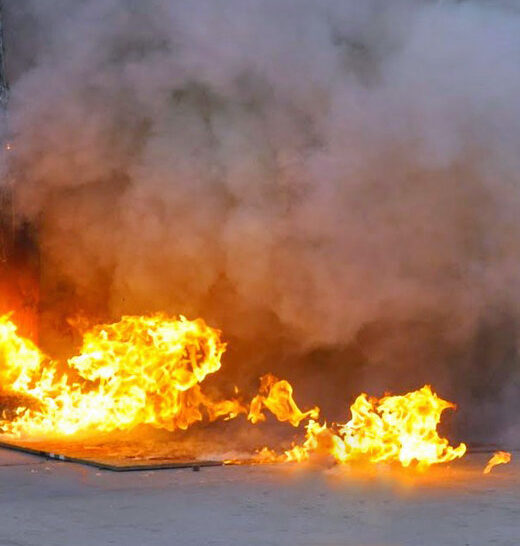Key Takeaways
- The Triangle Shirtwaist fire claimed 146 lives in 1911.
- Locked doors and no sprinklers made escape impossible.
- The tragedy spurred new safety laws and workers’ rights.
- Remembering the fire helps protect workers today.
Triangle Shirtwaist Fire: A Turning Point in Workplace Safety
On March 25, 1911, the Triangle Shirtwaist fire ripped through a factory in Manhattan’s Greenwich Village. Flames spread rapidly through the cramped tenement building. Smoke filled the stairwell, blocking the only exit. Trapped workers faced a deadly choice: stay inside or jump to their deaths. In minutes, 146 garment workers died from fire, smoke inhalation, or falling.
Why the Triangle Shirtwaist Fire Happened
First, the factory lacked basic safety features. There were no sprinklers to douse the flames. In addition, managers locked exit doors to prevent theft and unauthorized breaks. As a result, workers could not escape even as the fire ballooned. Moreover, the only stairwell lacked a smoke purge ventilation system. Consequently, thick black smoke choked anyone who tried to flee.
Second, the building design made matters worse. The workplace spanned three floors of a tall tenement building. Workers used narrow aisles packed with fabric and scraps. These materials fueled the fire like dry kindling. Meanwhile, the fire hoses and extinguishers failed, as no one trained the workers to use them.
Finally, poor labor conditions left workers exhausted and distracted. They worked long shifts under harsh supervision. When the fire alarm rang, many hesitated, unsure if it was real. By the time they realized the danger, flames had blocked most exits.
Immediate Aftermath and Public Outrage
Families and friends gathered on the streets below, screaming for news. Firefighters arrived quickly but could not save most trapped workers. Onlookers watched in horror as people jumped from windows. Newspapers published harrowing photos the next day. As a result, public anger grew. Citizens demanded answers and accountability.
In the weeks that followed, investigators probed the factory’s owners. They found multiple code violations. Yet the owners faced minimal punishment. This outcome stunned many and fueled calls for reform.
How the Triangle Shirtwaist Fire Changed Laws
Soon after the tragedy, New York lawmakers moved fast. They formed a factory investigation commission. Over two years, the commission inspected thousands of workplaces. It recommended more than 40 new laws. These laws forced building owners to install sprinklers, unlock exit doors during work hours, and widen staircases. Moreover, they required fire drills and clear exit signs.
In addition, these reforms inspired other states to act. Within a decade, similar laws appeared nationwide. Unions also gained strength as workers rallied for safer jobs. Therefore, the fire became a symbol of the struggle for labor rights.
Lasting Impact on Workers and Unions
In New York City, the fire sparked growth in the International Ladies’ Garment Workers’ Union. Membership swelled as workers sought collective protection. Union leaders used the tragedy to show the value of solidarity. As a result, garment workers won higher wages, shorter hours, and safer conditions.
Furthermore, the fire highlighted the plight of immigrant women. Many victims were young immigrants who labored in sweatshop conditions. Their sacrifices brought attention to both gender and ethnic inequality. In turn, social reformers pushed for broader protections for all workers.
Preserving the Memory Today
Every year, people hold ceremonies to honor the victims. Memorials stand near the old factory site. Schools and museums teach about the fire’s lessons. Moreover, scholars and activists remind us why workplace safety matters. They explain that the Triangle Shirtwaist fire could repeat without vigilance.
In addition, modern labor campaigns often reference the 1911 tragedy. For example, when workers in other industries face unsafe conditions, they cite the fire as a warning. Consequently, the event remains a powerful tool for change.
Why We Must Remember the Triangle Shirtwaist Fire
First, it shows how quickly disaster can strike without safety standards. Second, it proves that public outrage can force lawmakers to act. Third, it reminds us that the rights we enjoy today came at a high cost. Finally, it teaches the importance of standing up for others who cannot speak for themselves.
Today, as workplaces evolve with new technologies, the core lesson endures: safety can never be optional. We owe it to the Triangle Shirtwaist fire’s victims to keep that promise alive.
FAQs
What caused the Triangle Shirtwaist fire to spread so fast?
Flammable fabric scraps, locked doors, and a lack of sprinklers turned a small blaze into a deadly inferno.
How did the Triangle Shirtwaist fire influence modern labor laws?
The tragedy led to strict building codes, required fire drills, and stronger workers’ rights across the country.
Why were so many victims unable to escape?
Factory managers locked exit doors, the only stairwell filled with smoke, and fire hoses failed.
How is the Triangle Shirtwaist fire remembered today?
Memorials, school lessons, and annual ceremonies keep the memory alive and stress the need for safety. Source: https://www.nydailynews.com/2025/11/07/fire-codes-must-be-updated-for-safety/

